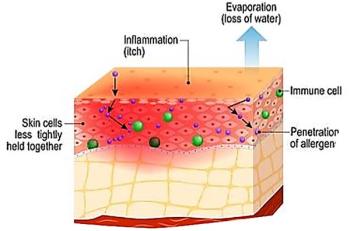
ACAAI: Rodent Exposure Linked to High Asthma Rates in Children
PHILADELPHIA -- Rodent allergies, particularly sensitivity to mouse allergens, are common among inner city children, and may be the primary triggers for moderate-to-severe asthma, reported researchers here.
PHILADELPHIA, Nov. 13 -- Rodent allergies, particularly sensitivity to mouse allergens, are common among inner city children, and may be the primary triggers for moderate-to-severe asthma, reported researchers here.
A retrospective study showed that 31% of inner city children in a small sample were sensitive to mouse allergens, and 18.5% were sensitized to rat allergens, said Philip Hemmers, D.O., of Long Island College Hospital in Brooklyn, .N.Y., and colleagues.
"This study reinforces the importance of rodents in the allergic evaluation of inner-city children, especially those with moderate-severe asthma," the investigators wrote in a poster presented at the American College of Allergy, Asthma and Immunology meeting.
"Mouse and rat allergens are well-known causes of occupational asthma; only recently have they been recognized as potential triggers inside the home," the authors wrote.
Analyses of data from the National Cooperative Inner-City Asthma Study have shown that 33% of inner city homes had detectable rat allergen, and that the presence of rat allergen was associated with reported rat and mouse infestations and evidence of mouse infestation on home inspection.
In that study, 18% of residents were found to be sensitive to mice, and 21% to rats. That information, and frequent reports of rat and mouse infestations in the homes of their patients, led the investigators to start including mouse and rat allergens in their skin-prick test panel.
They conducted a retrospective chart review of children from the ages of two through 17 who were seen at their clinic as new patients from July 1, 2004 to June 30, 2006.
They identified a total of 94 children who underwent skin-prick testing as part of their initial evaluation. They defined a positive test as a mean wheal diameter that was at least 3 mm larger than the negative control. Individual physicians recorded an asthma diagnosis and classification, based on current National Asthma Education and Prevention Program guidelines.
They found that 31.5% of patients were sensitive to mouse allergens, and 18.5% were sensitive to rat allergens. Among the patients with mouse sensitivity, 24% had allergic rhinitis without asthma, 30% had mild asthma, and 50% had moderate-to-severe asthma.
Among those with rat sensitivity, 15% had allergic rhinitis without asthma, 10% had mild asthma, and 40% had moderate-to-severe asthma.
"Mouse and rat sensitivities are common in our population," the investigators wrote. "The higher rates of mouse sensitization (versus rat) are likely due to mouse preference for the indoor environment. The prevalence rates are similar for patients without asthma or with mild asthma and are higher for those with moderate-severe disease."
The authors acknowledged that that the study was limited by its small sampling size and confounding variables, but pointed out that their results were consistent with those of other studies.
"Further prospective study, with consideration of confounding factors, is needed to better clarify the role of rodent hypersensitivity in asthma," they concluded.
Newsletter
Enhance your clinical practice with the Patient Care newsletter, offering the latest evidence-based guidelines, diagnostic insights, and treatment strategies for primary care physicians.

































































































































































































































































































































